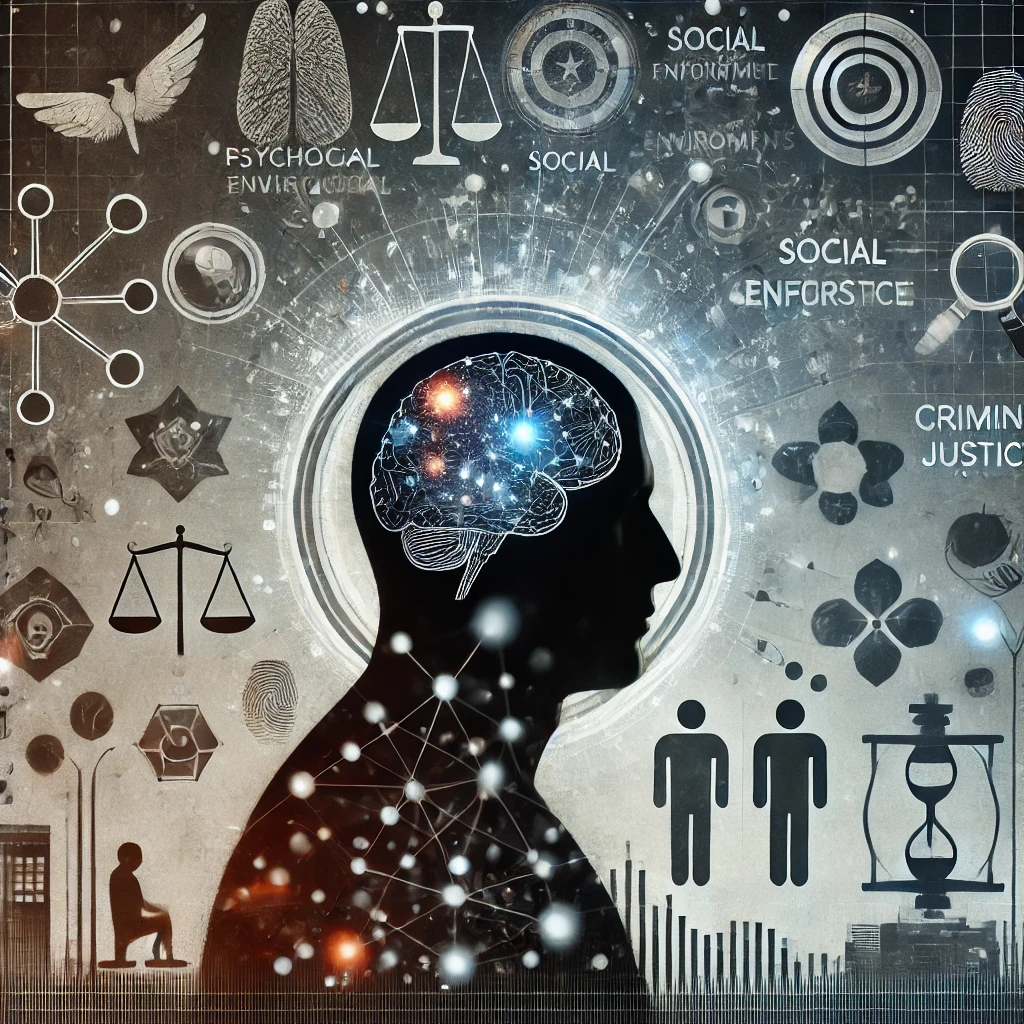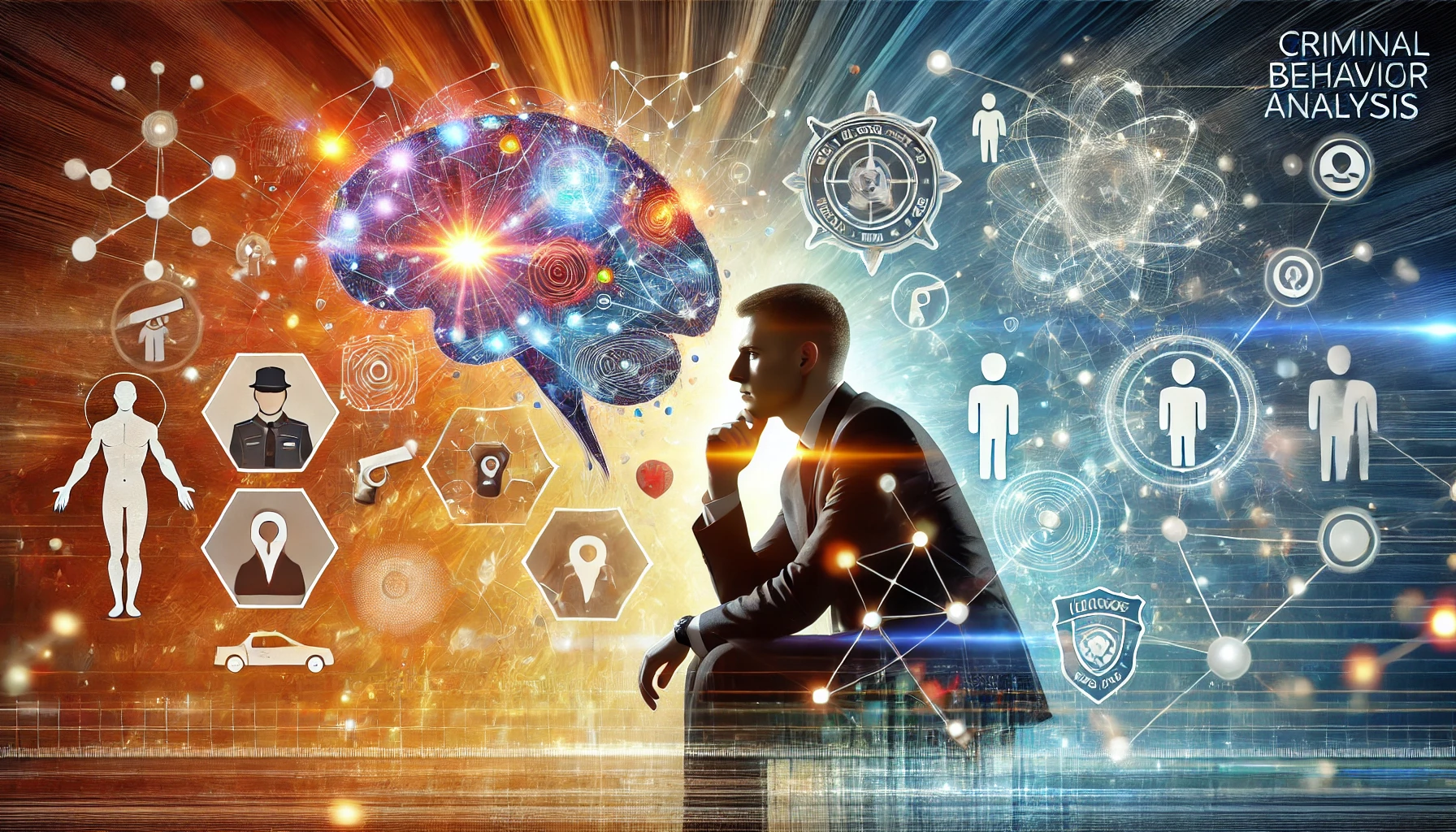Criminal behavior is a complex phenomenon that has garnered significant attention from scholars and researchers across various fields such as sociology, psychology, and criminology. Understanding this phenomenon requires a thorough exploration of the social, psychological, and biological contexts that influence it. This makes the study of criminal behavior and its causes crucial for understanding society and developing preventative policies.
Criminal Behavior: Concept and Definition
Criminal behavior refers to actions that violate the laws and regulations of a given society. These behaviors vary across cultures and social contexts. Criminologists define criminal behavior as the result of an interplay between various factors that drive an individual to commit unlawful acts.
Social Causes of Criminal Behavior
- Social Disintegration and Loss of Social Bonds
French sociologist Émile Durkheim argued that crime is a social phenomenon arising from the breakdown of social bonds and a weakened sense of belonging. In communities plagued by poverty and unemployment, the absence of social support often paves the way for increased criminal activities. - Economic Inequality and Poverty
Researchers highlight that poverty and disparities in wealth distribution are major causes of criminal behavior. Individuals experiencing economic marginalization may resort to crime as a means to meet their basic needs and achieve a decent standard of living. - Media and Societal Influence
Media plays a significant role in shaping criminal behavior. Irresponsible media coverage of crimes can normalize criminal acts or even inspire individuals to imitate such behaviors.
Psychological Causes of Criminal Behavior
- Mental and Psychological Disorders
Psychological factors play a fundamental role in understanding criminal behavior. Some individuals suffer from mental disorders that make them more prone to engaging in criminal acts. Sigmund Freud suggested that internal conflicts between the id and the superego could lead to aggressive behaviors. - Upbringing and Socialization
A troubled family environment or negative childhood experiences, such as neglect or exposure to violence, can lead to the development of criminal tendencies later in life. - Personality Traits and Criminal Inclinations
Research shows that certain personality traits, such as impulsivity, lack of empathy, and aggressiveness, are associated with a higher likelihood of criminal behavior.

Biological Causes of Criminal Behavior
- Genetics and Heredity
Some researchers argue that genetic factors can contribute to the likelihood of criminal behavior. This perspective focuses on twin studies and family lineage research to identify genes associated with criminal tendencies. - Neurological Disorders
Brain disorders or dysfunctions in neurological processes can impair decision-making and self-control, increasing the risk of criminal behavior. - Biological Environmental Factors
Exposure to harmful substances such as drugs and alcohol during developmental stages can affect brain function, leading to aggressive and criminal tendencies.
The Role of Technology in Studying Criminal Behavior
With technological advancements, tools for studying criminal behavior have become more precise. Today, artificial intelligence is used to analyze large datasets related to crimes, helping predict high-crime areas and develop effective preventive strategies. At the same time, the internet serves a dual role: raising awareness about crime risks while also enabling new types of crimes, such as cybercrimes.
A Multidimensional Approach to Understanding Criminal Behavior
Analyzing criminal behavior requires adopting a multidimensional approach that combines social, psychological, and biological factors. This comprehensive perspective provides a clearer understanding of the underlying causes of crime, enabling the development of more efficient prevention policies.
Conclusion
The study of criminal behavior and its causes remains a vital topic in scientific research. Throug an in-depth understanding of the factors influencing this phenomenon, societies can develop effective programs for crime prevention and social justice. Scientific analysis of this phenomenon is not only a tool for understanding the past but also a roadmap toward a safer and more stable future.

